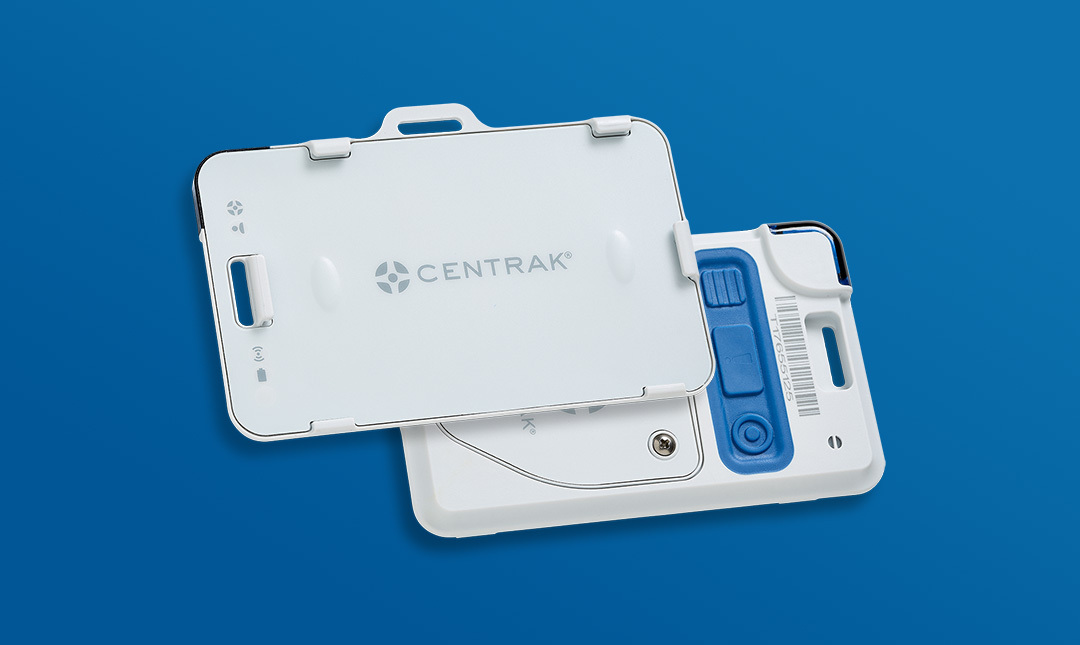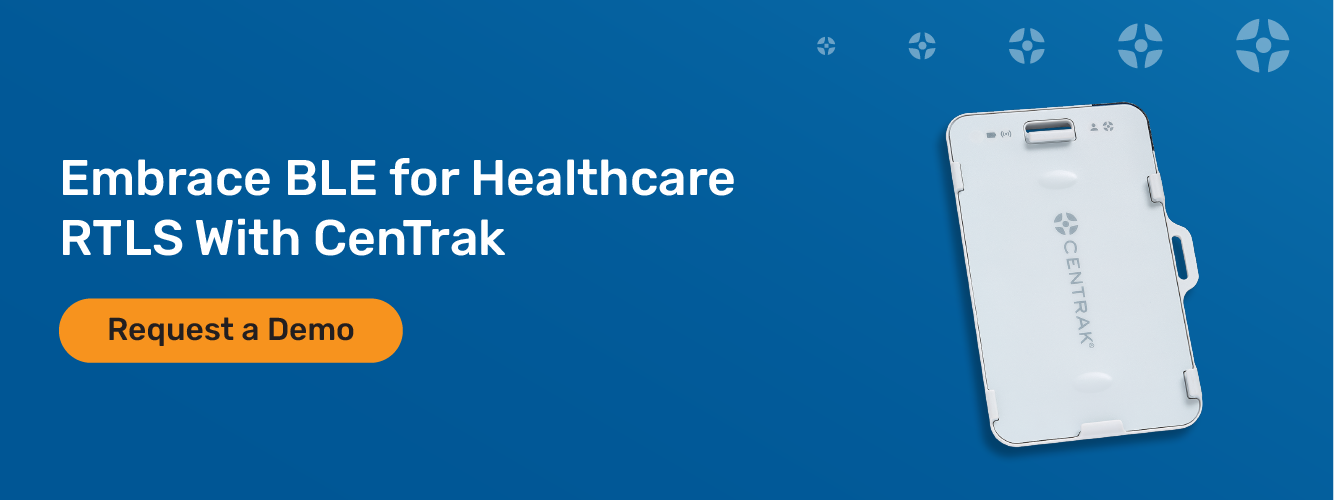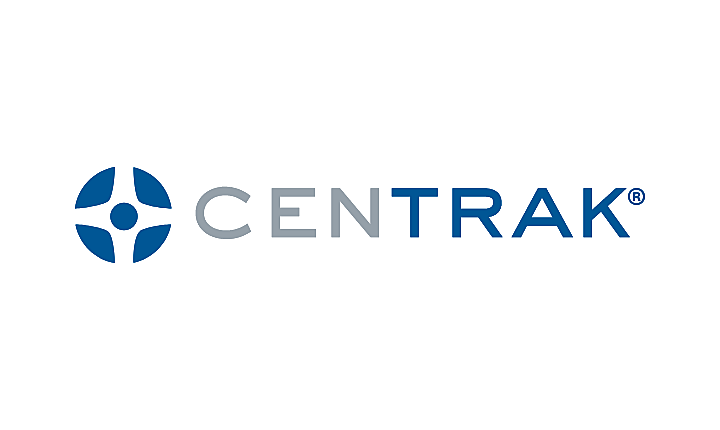Leveraging Bluetooth Low-Energy Technology in Healthcare

Bluetooth technology has significantly influenced our daily lives with innovations like wireless headphones, cordless computer mice, and wearable fitness bands that transmit data to smartphones. In the healthcare sector, where various wireless technologies have been utilized in medical devices for many years, Bluetooth Low Energy (BLE) is revolutionizing wireless connectivity. Unlike traditional Bluetooth, BLE consumes minimal battery power while delivering a robust and dependable connection. This makes BLE particularly valuable in medical applications due to its efficiency, reliability, and cost-effectiveness.
What Is BLE in Healthcare?
BLE is invaluable in healthcare, and is often embedded into medical devices, remote monitoring tools, and wearables like smart patient ID bands. BLE wireless technology can transmit data quickly and frequently, allowing healthcare providers to deliver the best possible care. They can also operate at a fraction of the size of traditional Bluetooth or Wi-Fi devices.
Benefits of BLE RTLS Systems in Healthcare
Implementing BLE RTLS can enhance a healthcare system's overall infrastructure through use cases such as:
- Security and duress situations: If a workplace violence or security issue were to occur, and a staff member was in duress, a BLE RTLS can quickly identify which employees need help and where they are.
- Asset tracking and management: A BLE RTLS can help providers quickly locate and retrieve medical equipment to ensure they offer timely patient care and that equipment is available when needed.
- Patient tracking and monitoring: BLE RTLS enables real-time monitoring of patient locations to ensure they remain within authorized areas. Staff receive instant alerts if a patient approaches a restricted area, with some facilities automatically locking doors to enhance patient safety. In emergencies, BLE RTLS helps locate distressed patients and life-saving equipment promptly, eliminating search time. In routine situations, staff can efficiently check the status of patient care phases from their stations, ensuring they are informed of next steps without interruption.
- Staff workflow optimization: Using a BLE RTLS allows facilities to identify high-need areas to optimize workflows. This real-time information can also assist in coordinating care among multiple teams for better patient outcomes.
- Infection control: With a BLE RTLS, you can pinpoint interactions between employees, patients, and equipment to reduce the spread of infectious diseases or mitigate an outbreak.
- Wayfinding: BLE-enabled RTLS utilizes a patient's real-time location to offer precise, turn-by-turn directions throughout the healthcare campus. This user-friendly and intuitive feature enhances the patient experience, enabling a smooth visit to the facility. Access to facility directions reduces anxiety and promotes punctuality for appointments, contributing to enhanced operational efficiency and increased revenue for the facility.
Redesigning Workloads With BLE RTLS
One of the most significant advantages of BLE RTLS in the healthcare sector is its ability enhance visibility and improve patient outcomes.
Implementing innovative technology can empower more efficient communication and automate processes to reduce workload errors, like improved internal logistics and enhanced workflow efficiency. Automated processes enabled the facility to boost resource utilization and efficiency through increased visibility.
This technology can also address patient outcomes in several ways, including increased visibility of patient loads, boosted alert times for patient needs, and provided detailed insights regarding nurse response time. It has been shown that quick response times can enhance the healing processes and patient experiences.
BLE vs. Wi-Fi for Real-Time Location Systems
CenTrak's BLE multi-mode badge offers numerous benefits for healthcare providers and can be quickly deployed to facilities interested in RTLS. Here are other advantages of choosing a BLE badge from CenTrak over a Wi-Fi system.

- Durability: CenTrak's BLE badge is made to withstand daily wear and tear with an IP67 rating.
- Speed: Use BLE to rapidly send small data batches, such as location updates and emergency calls.
- User notifications: With our BLE badge, it's easy to see and receive notifications with an audible buzzer and diagnostics LEDs.
- Power consumption: The benefits of consuming less power can be immense for healthcare facilities. In most cases, BLE devices are about 30% more efficient and less energy-hungry than Wi-Fi.
- Deployment costs and simplicity: Our BLE is easy to install and less expensive while offering years of use on a single battery, depending on usage, thanks to an extended battery life.
- Smaller devices: Thanks to its lower power consumption, even during frequent data transmissions, our BLE technology enables devices to maintain continuous communication with smaller batteries. This efficiency results in overall smaller device sizes, enhancing portability and usability.
- Bidirectional communications: Enjoy fast, centralized device management facilitated by easy over-the-air firmware updates. Bidirectional communications over BLE offers swift deployment of enhancements and patches, maintaining peak performance and security across devices and systems.
Staff Duress & Violence Prevention with BLE Technology
BLE technology can play a pivotal role in enhancing staff safety and security within hospitals. BLE staff duress systems offer essential protection by utilizing locating capabilities, crucial during emergencies. When staff members are in distress, they can discreetly request assistance by pressing a button. This action triggers an alert that is immediately sent to nearby personnel and the security team.
These systems enable swift responses to emergencies by pinpointing the location of distressed staff members within the facility. This capability significantly reduces response times and enhances overall safety protocols.
For instance, in scenarios like security threats or medical emergencies, BLE technology can automatically alert designated personnel and provide them with the location of the staff member in distress. This immediate notification facilitates prompt intervention and assistance, thereby boosting staff safety and morale.
Implementing BLE staff duress systems improves the safety and well-being of hospital staff in critical situations. The cost-effectiveness of BLE technology provides peace of mind, underscoring its value in modern healthcare environments for both staff and patient experiences.
Leveraging BLE for Hospital Digital Wayfinding
The significant number of medical and personal mobile devices supporting this technology make it possible for hospitals to better engage with their patients before, during, and after each visit. Research shows 86% of healthcare professionals believe mobile apps can improve patient experience and outcomes.
For example, wayfinding applications can minimize frustration and increase patient satisfaction during an often stressful or confusing experience. Wayfinding uses smartphone capabilities in addition to location-based technology, such as real-time location systems, to create an indoor navigation system. Patients and hospital visitors can use their smartphones to find their destination in a complex healthcare facility with multiple buildings, floors, and rooms.
From the parking garage, where they can drop a location reminder to help them easily return to their parking space, RLTS provides turn-by-turn directions and real-time map views, much like a standard GPS. Additionally, lost and unhappy patients may create an even more expensive problem than the possibility of negative HCAHPS scores. When patients get lost, they often end up late for their appointment, which could back up schedules and create costly inefficiencies.
The combination of RTLS and BLE technologies also enables event-driven triggers based on proximity sensing and timing, which may help streamline numerous clinical processes. Automating patient check-in when their destination recognizes their mobile device can deliver a seamless experience upon arrival. During their wait, they can receive contextual content such as the facility’s latest technology and advancements in diagnostic imaging. Subsequently, before the patient exits the facility at the end of their visit, they can take a brief survey on their mobile device to resolve any issues before the official HCAHPS survey goes out.
How BLE Enhances the Healthcare Experience
The healthcare industry continually evaluates new technologies, as providers look for ways to streamline care and improve patient outcomes. BLE medical devices enhance the healthcare experience in numerous ways.
- Connected medication: Many hospital patients connect to wireless medical devices. By eliminating wires and relying on top-notch technology, healthcare professionals can save time, reduce the likelihood of errors, and improve comfort. Providers can use BLE to administer timed medication and fluids with oversight from a central monitoring system.
- Connected monitoring: Real-time monitoring can relay information about a patient's status on the way to the hospital. For example, a defibrillator can use BLE, empowering the hospital staff to better prepare for the patient's arrival.
- Low power consumption: BLE devices save energy. These devices have a long life span and can meet compliance standards for environmental sensors and patient monitoring.
- Connected inventory: Healthcare professionals can also leverage BLE to monitor inventory, such as blood bank levels. Blood banks require specific temperatures for safe use, and facilities can use BLE for network communication regarding software changes to ensure inventory safety.
- Connected home health: Healthcare providers can transfer care into the home to increase efficiency, improve comfort, and save costs. Devices like blood pressure monitors, weight scales, and heart rate monitors can use BLE to relay information to caregivers, creating a seamless process.

Embrace BLE for Healthcare RTLS With CenTrak
As mobile health continues introducing innovative ways to help healthcare organizations engage patients and improve outcomes, CenTrak incorporates all new technologies to provide a “future-proof” RTLS investment. CenTrak has introduced the addition of Bluetooth Low Energy to our Multi-Mode RTLS platform. Locating assets, patients, staff, and visitors in the healthcare environment requires a fully integrated combination of diverse technologies to achieve maximum benefit. CenTrak's BLE functionality is one of the many technologies used to improve the utility of our location services.
The BLE Multi-Mode Platform is a unique solution in the market that seamlessly transitions between BLE and all CenTrak Clinical-Grade Locating (CGL) environments. CGL provides certainty-based locating with room- to sub room-level accuracy. This cutting-edge interoperability enables clients to harness mixed RTLS infrastructure within a single building or across an entire hospital campus, effectively balancing affordability and precision based on departmental requirements.
Leveraging existing BLE-enabled hospital networks and infrastructure offered by leading vendors like Cisco Systems and HPE Aruba Networking, this integration technology expedites the adoption of location-based services, facilitating tag and badge-only deployments for critical use-cases such as staff duress and asset tracking. Many facilities have benefited from implementing RTLS systems. For instance, Mission Hospital saw significant savings with CenTrak's asset tracking solution, and the Staff Duress system dramatically increased safety for staff at Atrium Health Wake Forest Baptist.
At the core of this platform is CenTrak's redesigned RTLS badge, offering healthcare providers a swift and cost-effective entry point into their RTLS journey. The badge features enhanced durability with an IP67 rating, prolonged battery life, effortless over-the-air maintenance, and user-friendly notifications, including diagnostic LEDs and an audible buzzer. Each badge incorporates a dedicated emergency duress button with a recessed design to prevent false alerts, along with two configurable buttons to support tailored workflows.
When selecting an RTLS provider, healthcare leaders should consider multiple technologies for their enterprise location services strategy. BLE is only one piece of the puzzle, and you must evaluate solutions that will meet your current and future location accuracy needs — for instance, room-, bed-, or bay-level — and system interoperability requirements. Request more information on implementing and leveraging BLE technology for staff duress, wayfinding, asset management, and other location-based use cases.






